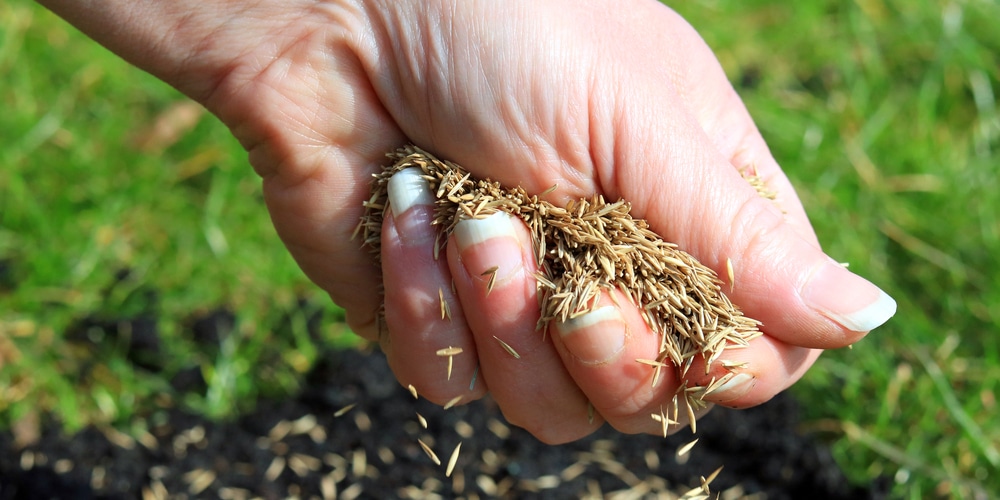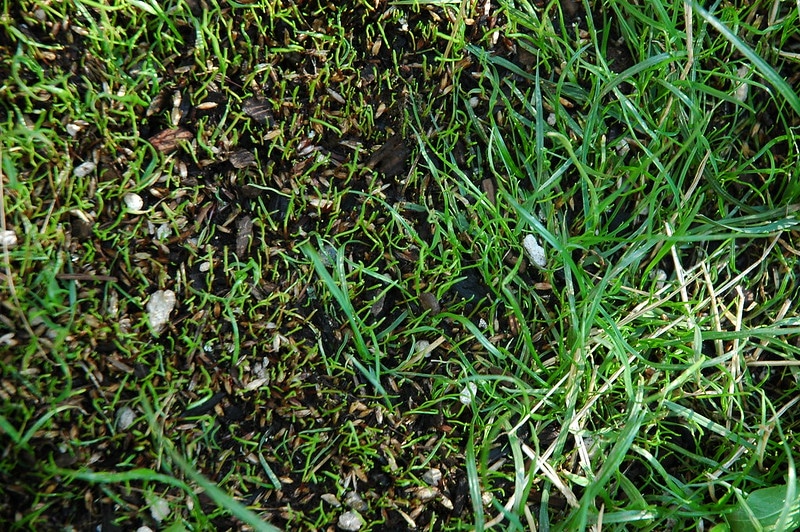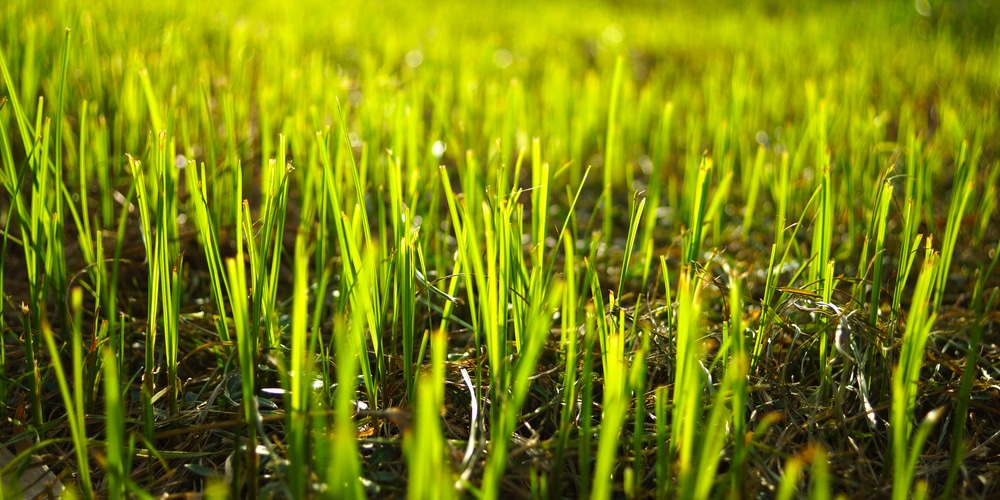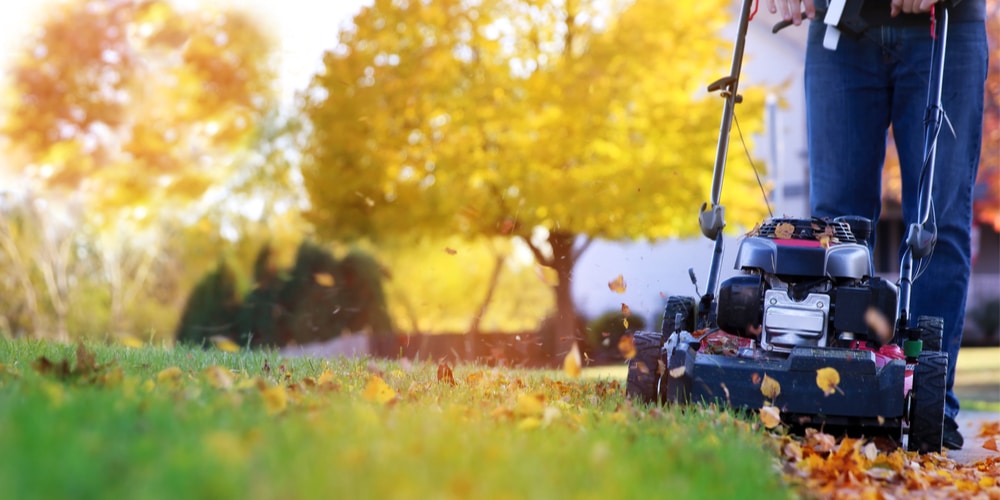Aerating and overseeding is a great way to bring your lawn back from years of damage or from one bad season when the weather didn’t cooperate. It will take time, so be patient. The results are worth it. It’s important to know when to mow after overseeding. You don’t want to damage your new lawn.
If you’re unsure when the best time to overseed in your area is, call your local cooperative extension office. Overseeding will allow you to transform a patchy looking yard into a lush, thriving lawn. Let’s look at when to mow after overseeding.
What to consider before overseeding
Before overseeding patchy areas in your grass, it’s a good idea to aerate the lawn. Aerating the grass helps break down the soil so roots can grow deeper and stronger. A healthy root system makes for a thicker lawn that can better handle pests, disease, drought, or other lawn problems.
Aeration also helps relieve soil compaction, so the seed will have good contact with the soil, which means it won’t wash away. Aerating your lawn before overseeding is essential to get the best results.
Before you overseed, you can also water your lawn to a depth of 4 or 5 inches. Don’t just sprinkle the surface but give it a good soaking down into the soil. This will help seeds germinate better by keeping them moist.
When to mow after overseeding?
There are many factors that come into play when answering this question. You’ll need to consider the climate in your area, how wet it is when you seeded.
It’s best to let your grass grow for two to four weeks before mowing it. This will give the root systems a chance to establish themselves, and after that’s happened, then you can start cutting. After you’ve waited the appropriate time frame, then mow your grass to the recommended height. For most areas, that is between 2 and 3 inches tall. It’s also worth noting that the recommended height varies depending on the variety of grass planted.
Let your grass grow out a bit before mowing to reduce stress on your grass seedlings, which means they have a better chance of growing up healthy and strong.
If you don’t mow your lawn soon enough, new seedlings can die due to anaerobic decomposition. Anaerobic decomposition is when seeds don’t receive enough oxygen, and they begin to rot in place rather than grow. This creates a hard layer that can kill new seedlings, so try to mow them as soon as possible.
When to overseed your lawn
The time of year for overseeding will depend on the climate and type of grass you plan to plant.
Cool-season grasses
If you live in an area with cold winters with the chance of frost and snow, you’ll require a cool-season grass. Some examples of cool-season grasses include Fescue, Kentucky bluegrass, or Ryegrass. These grass varieties should be planted in the fall and have their growing season throughout the winter to early spring. If you’re overseeding a cool-season lawn, you can seed your yard in the early fall.
It’s best to overseed early in the fall so that your seeds have a chance to germinate and establish themselves before the cold winter sets in. Cool-season grasses need some sunshine during the day and colder temperatures at night to germinate.
Warm-season grass
In areas with warm summer weather and milder winter, you can grow warm-season grasses. Some examples of warm-season grass varieties include Zoysia, Bermuda, or Buffalo grass. These varieties of grass can be planted or overseeded in the early spring. It’s best to plant early, particularly if you live in an area with scorching summers, as your grass seedlings will have more success if they are able to establish themselves before the hot weather sets in.
Before You Mow: Overseeding Tips
1. Fall is the best time to seed lawns in most parts of the country.
2. When seeding a lawn with grass seed, it’s very important to determine what type of soil you have and how much sunlight the area receives in order to choose the right kind of grass for your lawn. Grass that thrives in shady conditions will not make a very good lawn if there is a lot of sunlight.
3. Read the grass seed package to determine how much area each pound will sow. This information should include how many square feet of area it can cover, as well as depth and width of coverage. In general, one five-pound bag of grass seed will cover around 1,000 square feet. That is the equivalent of 100 square yards.
4. Run the spreader in different directions to achieve even coverage, and overlap each pass by 50 percent. This will ensure that there are no barren spots in your newly seeded lawn when you’re done seeding. If you miss areas, allow the grass seed to dry completely, then rake the areas to loosen the soil and pick up any missed seeds. Reapply the grass seed to these bare spots, but do not cover them with a second layer of soil. You will have a better chance of it growing well if you leave it uncovered for a few weeks, so that it can send roots down into the existing soil.
5. If you choose to mix fertilizer into the soil before applying grass seed, it’s best not to add any more after this process is complete, as it could make the seeds die out.
6. After your lawn has been seeded and raked smooth, use a leaf rake or broom to brush over the seeded area in straight lines and diagonals to further smooth the soil and press the seed into place.
7. Water the seeded area immediately after seeding, then soak it two or three times a day for two weeks. After this initial period is over, water only when the ground is dry and there is no rain expected in your area within 48 hours.
8. While you wait for your grass seed to take root, consider fertilizing it regularly. This will encourage faster growth and also prevent weeds from taking over your lawn.
9. After two weeks of watering the seeded area, mow the grass, as usual, to ensure that the newly grown seeds get enough sunlight and air circulation.
10. Continue to water and fertilize your lawn until the area is completely filled in.
11. Now that your new lawn is established, you can pull out the wood chips and mulch around it. Wood chips help keep weeds from growing up into your greenery, but if there is a yard full of sun-loving grass seeds, they will no longer be necessary. Now that your yard has been established you can mow it after overseeding!
12. Step back and admire your new lawn!
Conclusion
When to mow after overseeding is the question that every homeowner will ask at one time or another. After all, you want your seedlings to be strong and healthy; if they end up getting cut too short by accident, it could damage them beyond repair. Therefore, it’s best to wait at least two weeks before mowing your grass; many people wait up to four weeks.



